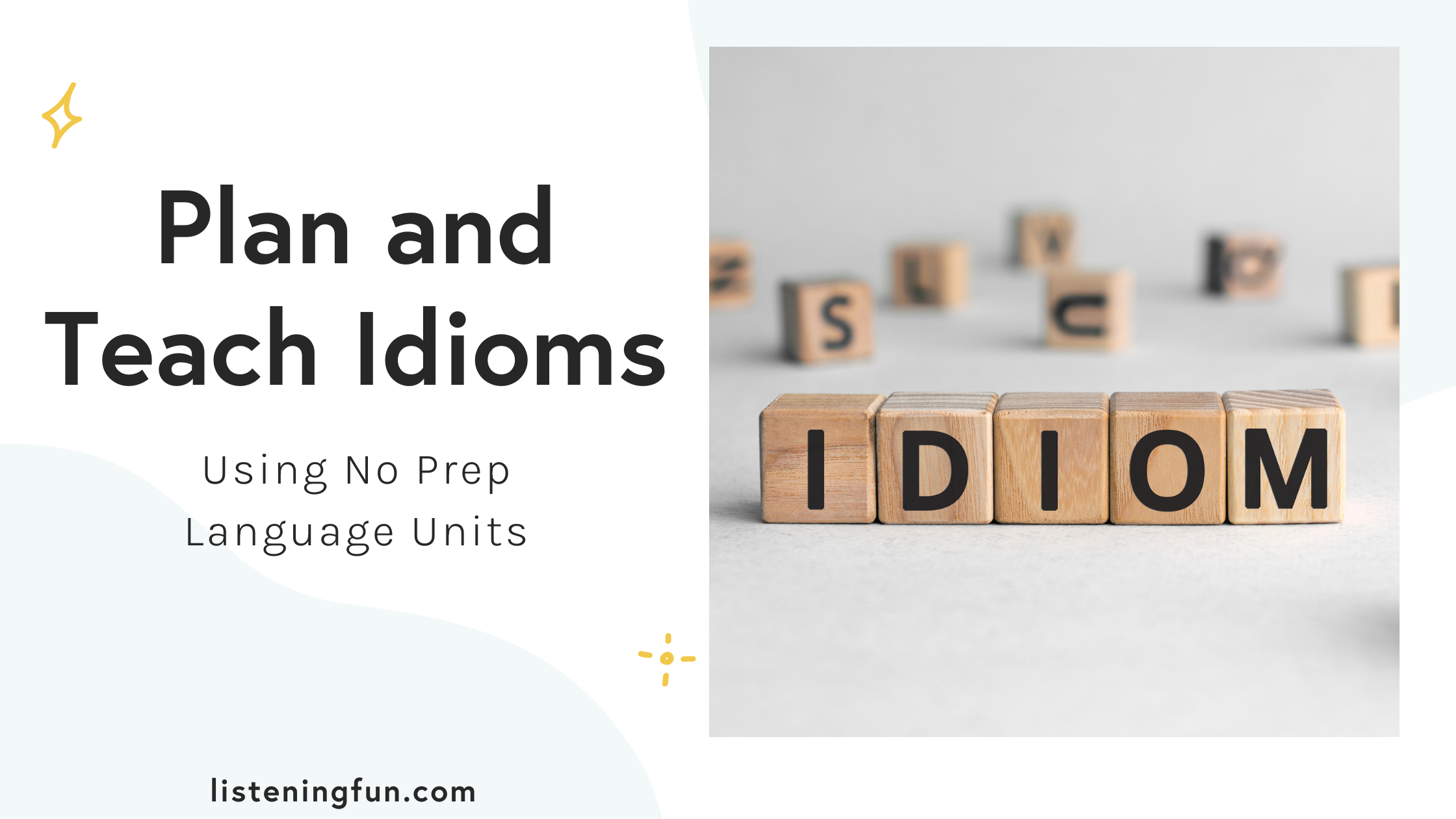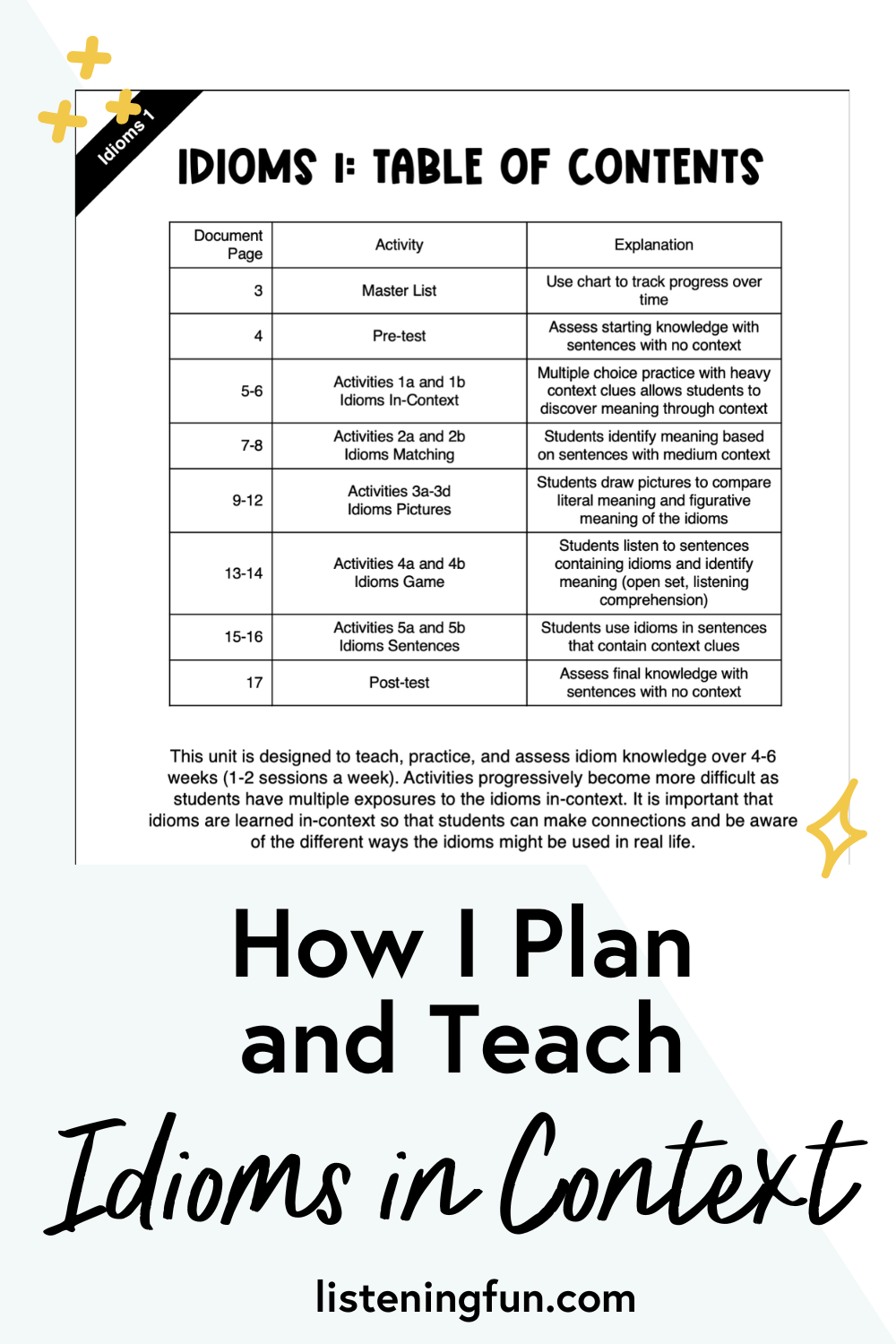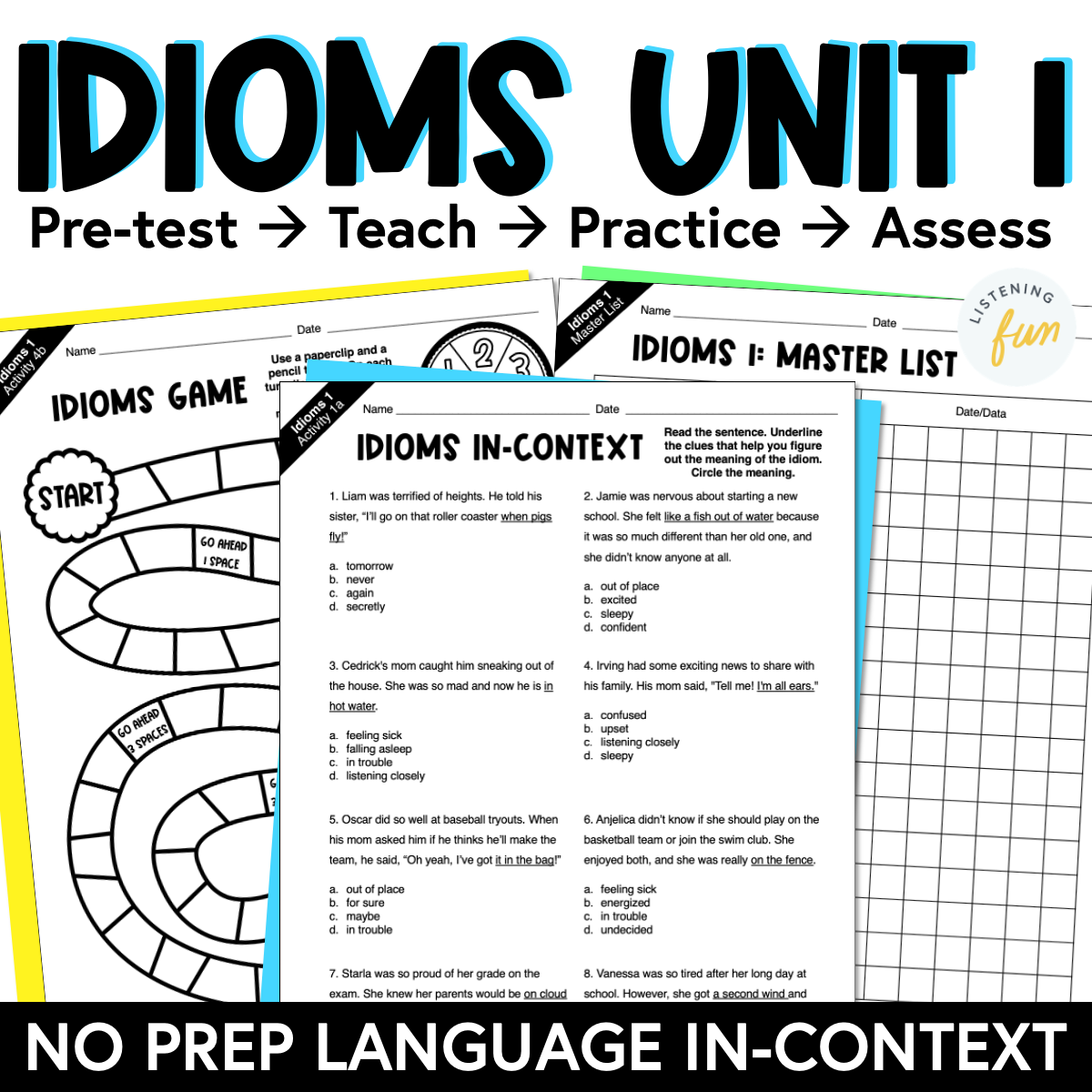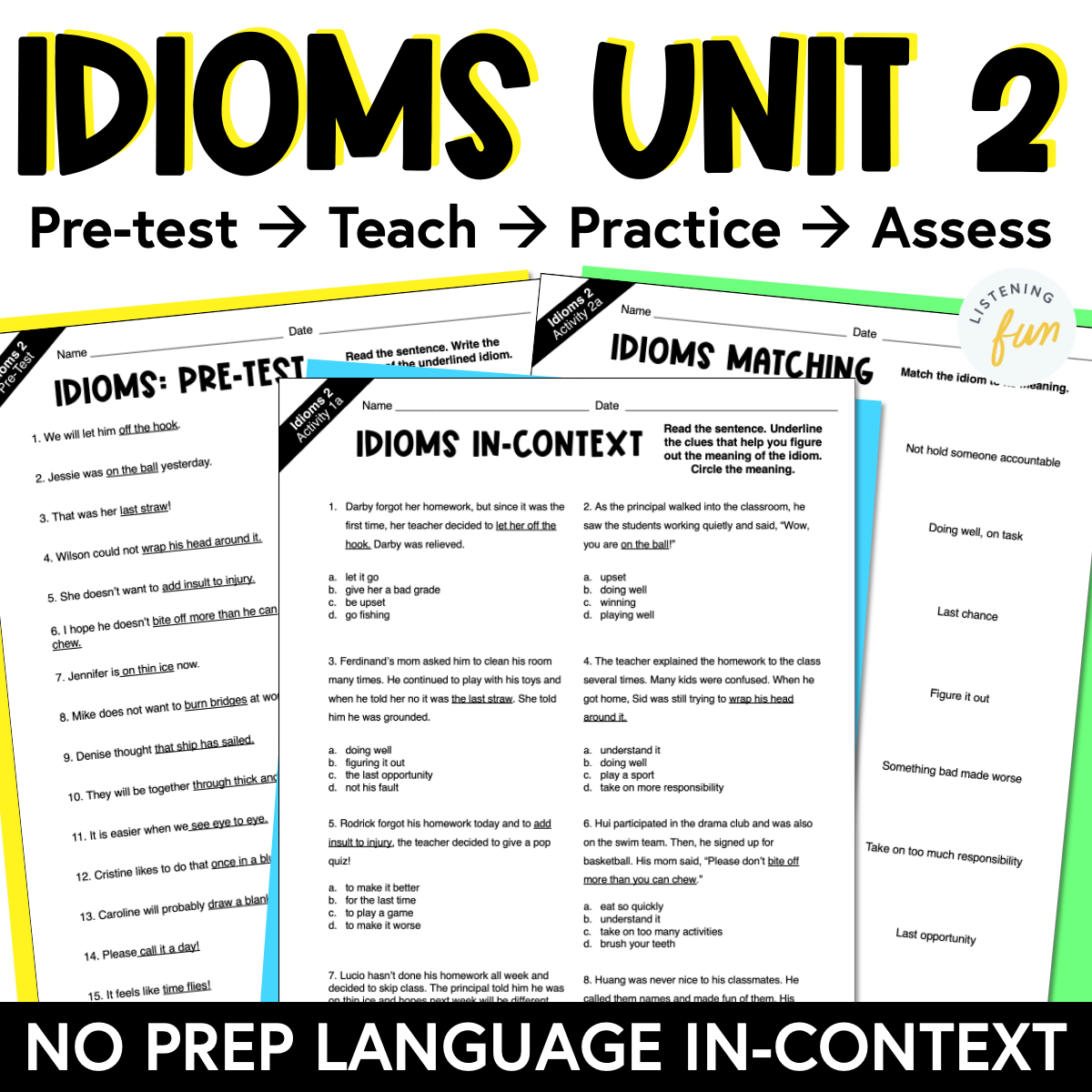How to Plan and Teach Idioms
On thin ice. Call it a day. Time flies. Under the weather. In hot water.
IDIOMS… we hear them all the time. We use them in conversation, we hear them while watching TV shows and movies, we read them in books and social media. So what are idioms? And why do we need to focus on teaching idioms as a TOD?
An idiom is a type of figurative language that does not mean exactly what it sounds like! Children with typical hearing often pick up on idioms and their meanings through incidental language exposure. However, children who are deaf or hard of hearing often need explicit instruction with figurative language, including idioms.
Idioms are part of language arts instruction starting in early elementary. With DHH students, that extra explicit instruction often happens during one-on-one or small group instruction with a TOD or speech therapist.
HOW DO I PLAN AND TEACH IDIOMS?
I like to keep things easy and effective when I plan for language goals, such as idioms. Trying to plan individually for every single session is time consuming and not ideal at all!
So, what I like to do is look at one student, one goal, one month at a time. I ask myself: what do I want to happen by the end of this month? What progress do I want to see? And how can I plan activities that build on each other?
When I’m planning four to six weeks at a time, I like to follow this general idea:
Pre-test
Activities that provide a lot of context
Focused activities on challenging areas
Applying the language
Post-Test
The reason I think it’s important to plan this way, for language goals such as idioms, is because it’s really important that language is learned in context, through repetition, and multiple exposures in order to really learn these skills. We all know just telling our students the meaning of an idiom one time isn't going to cut it.
PRE-TEST
First, I start off with a pretest. The pretest has the idioms in sentences with no context. This is to get a baseline - do they know it or do they not know it? I want this to be purely based on the words in the idiom itself.
HEAVY CONTEXT ACTIVITY
My first session with a student working on idioms I’m going to really focus on learning the idioms in context. I give example sentences that have idioms with *a lot* of context clues. Also, I give them multiple choice formats.
I really want them to discover the meaning of the idiom through examples on their own, as opposed to me just telling them the meaning. And because I’ve given them multiple choice answers, they have choices to pick from and they can plug it in and see what makes sense. They can start to learn the meaning of the idioms through exposure and through context.
MEDIUM LEVEL CONTEXT
The next time I see the student, we're going to move on to a slightly more challenging activity. This time, I’ll do matching - where the idioms are still in sentences but the sentences have more of a medium level context, not so many abundant context clues. This time I’ll give them eight choices instead of four, and they're going to match the meaning of the idiom with the idiom in the sentence.
DRAWING PICTURES FOR DIFFICULT IDIOMS
During our next session, we're going to move on and really start targeting some of the idioms that maybe they don’t seem too sure about. At this point, you should have been keeping track of which idioms they are picking up on quickly and which ones they may be struggling with. So for those that are difficult, we’re going to do idiom pictures.
I give my student a sentence with the idiom they are struggling with. So the idiom is still in context, and that’s really important, and I ask them to draw a picture of the actual meaning of the sentence. So not a picture of the meaning of the idiom in isolation, it’s based on the context of the sentence.
LISTENING FOR IDIOMS IN SPOKEN LANGUAGE
So by now I’ve probably been working on idioms with a student for a few weeks, and we're going to play an idioms game. This game is going to rely on listening comprehension. At this point, we've had three exposures already in writing and now we're going to listen to a sentence and see if we can identify the idiom in context through spoken language. This is a way to practice listening for idioms as they might encounter them in their day to day life- through spoken language. The teacher will read the sentence while the student listens and then together discuss the meaning of the idiom in context through spoken language.
WRITING IDIOMS IN SENTENCES
The final activity is going to be having the student produce sentences with idioms. At this point, they've already heard these idioms in sentences about three or four times. This is important because it's not like they just heard one example and that’s now the one example they associate with that idiom. No, they’ve heard several different examples, several different contexts, several different ways it can be used. Now they can apply what they’ve learned and practiced over the last few sessions with you and start to write their own sentences with idioms.
POST-TEST
Finally, a post-test. This will be very similar to the pretest. I give my student sentences that have no context at all. I want to know if they truly know the meaning of the idiom or not.
IDIOMS IN CONTEXT ACTIVITIES
So I took my system for planning in this way and developed different language units. Idioms In-Context No Prep Unit 1 follows these exact steps. This unit is designed for individual or small group intervention by a Teacher of the Deaf, speech therapist, special educator, etc.
This packet takes you from pre-test, to activities that get progressively more challenging focusing on the same 16 idioms, to a post-test so that you have four to six weeks of activities planned. By the end, you have data to show that your students have learned that skill. My favorite thing about this resource is that you just print off this packet and THAT’S IT! You print it and put it in a folder and you just planned for the month for that one student working on a language goal! And hey, if you have access to technology (like an iPad) you don’t even need to take the time to print! Score! And because it’s so easy and effective, I created an Idioms In-Context No Prep Unit 2. It’s the same exact setup with 16 different idioms.
Did you find this post helpful?! I am also working on making these unit packets for other common language goals, like synonyms/antonyms, multiple meaning words, analogies, etc. If there’s something that you feel like you would want this kind of resource for, let me know!





